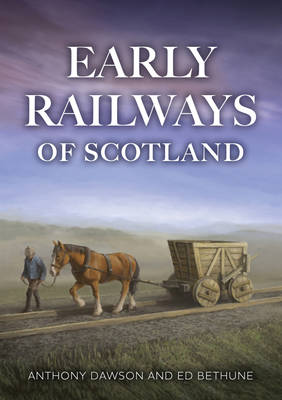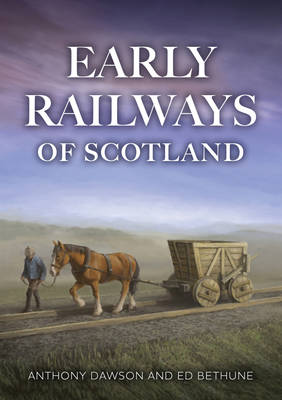
- Afhalen na 1 uur in een winkel met voorraad
- Gratis thuislevering in België vanaf € 30
- Ruim aanbod met 7 miljoen producten
- Afhalen na 1 uur in een winkel met voorraad
- Gratis thuislevering in België vanaf € 30
- Ruim aanbod met 7 miljoen producten
Omschrijving
Scottish railway history began in 1722 when William Dickson commenced work on the Tranent-Cockenzie Waggonway. Built entirely in wood and designed to carry coal from pits at Tranent to salt pans at Cockenzie, it was the first railway to be built in Scotland. Developing first in the most industrialised parts of the country, in the Lothians and later around Glasgow, wooden and iron railways flourished in no small part thanks to the work of Robert Stevenson. Ed Bethune and Anthony Dawson of the 1722 Waggonway Project present a century-long tour of the earliest of Scottish railways, beginning in 1722 and ending with the Garnkirk & Glasgow Railway of 1831, the first 'modern' railway in Scotland. The 1722 Waggonway Heritage Group was established in 2017 to preserve, promote and enhance the history of the Tranent-Cockenzie Waggonway through research, archaeology and community heritage initiatives. Thanks to the work of the group, much is now known about how early wooden railways were constructed and how early nineteenth-century fish-bellied rails laid on stone blocks worked, as well as the 1833 Robert Stevenson-designed harbour at Cockenzie.
Brand-new information from the archival and archaeological work into Scotland's earliest railways is showcased alongside fascinating and rare images, all serving to set the scene for the beginnings of the Scottish railway network as conceived by trailblazers William Dickson, William Adam and Robert Stevenson.
Specificaties
Betrokkenen
- Auteur(s):
- Uitgeverij:
Inhoud
- Aantal bladzijden:
- 96
- Taal:
- Engels
Eigenschappen
- Productcode (EAN):
- 9781398123199
- Verschijningsdatum:
- 15/08/2025
- Uitvoering:
- Paperback
- Formaat:
- Trade paperback (VS)
- Afmetingen:
- 165 mm x 234 mm
- Gewicht:
- 310 g

Alleen bij Standaard Boekhandel
Beoordelingen
We publiceren alleen reviews die voldoen aan de voorwaarden voor reviews. Bekijk onze voorwaarden voor reviews.









